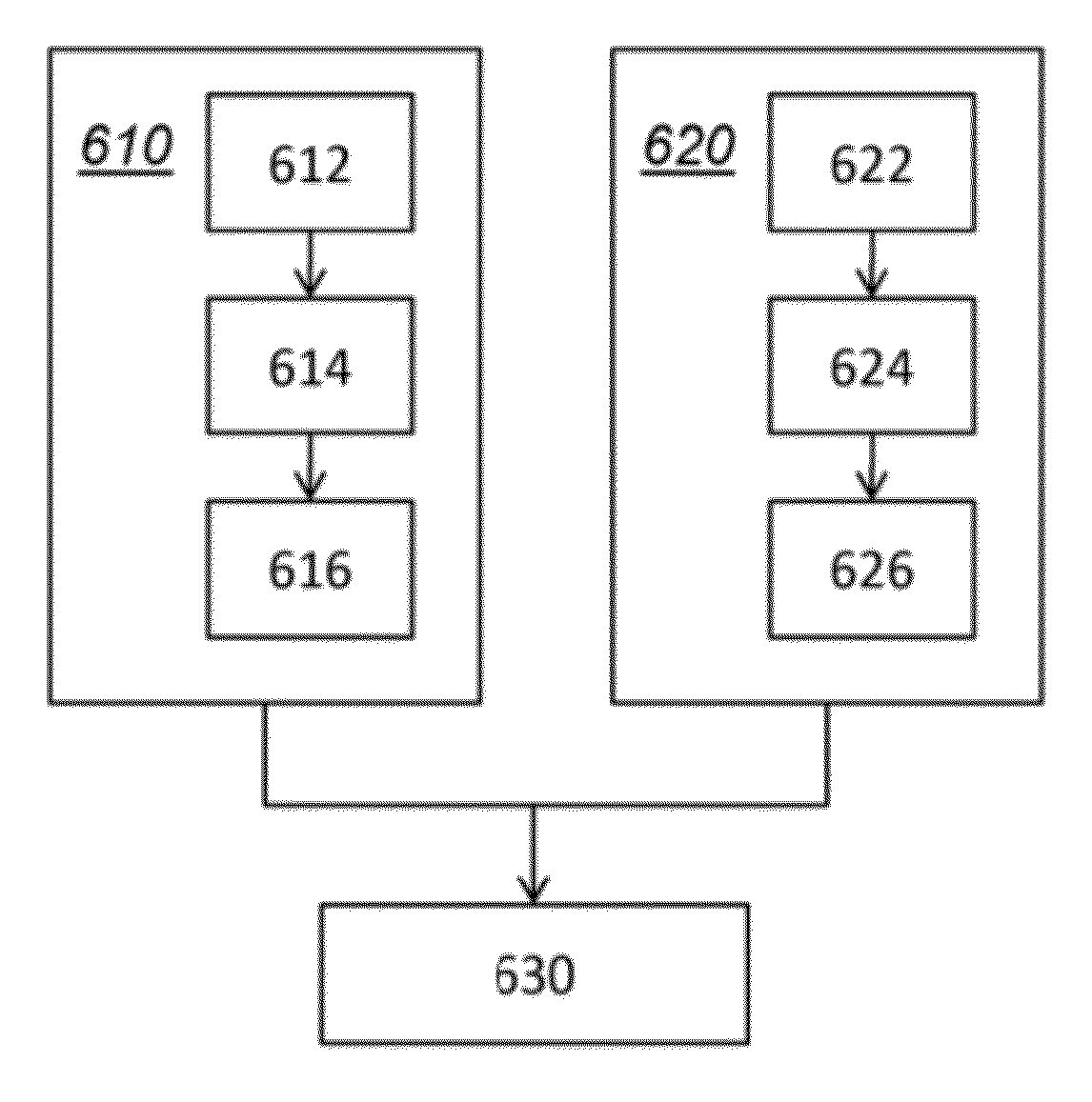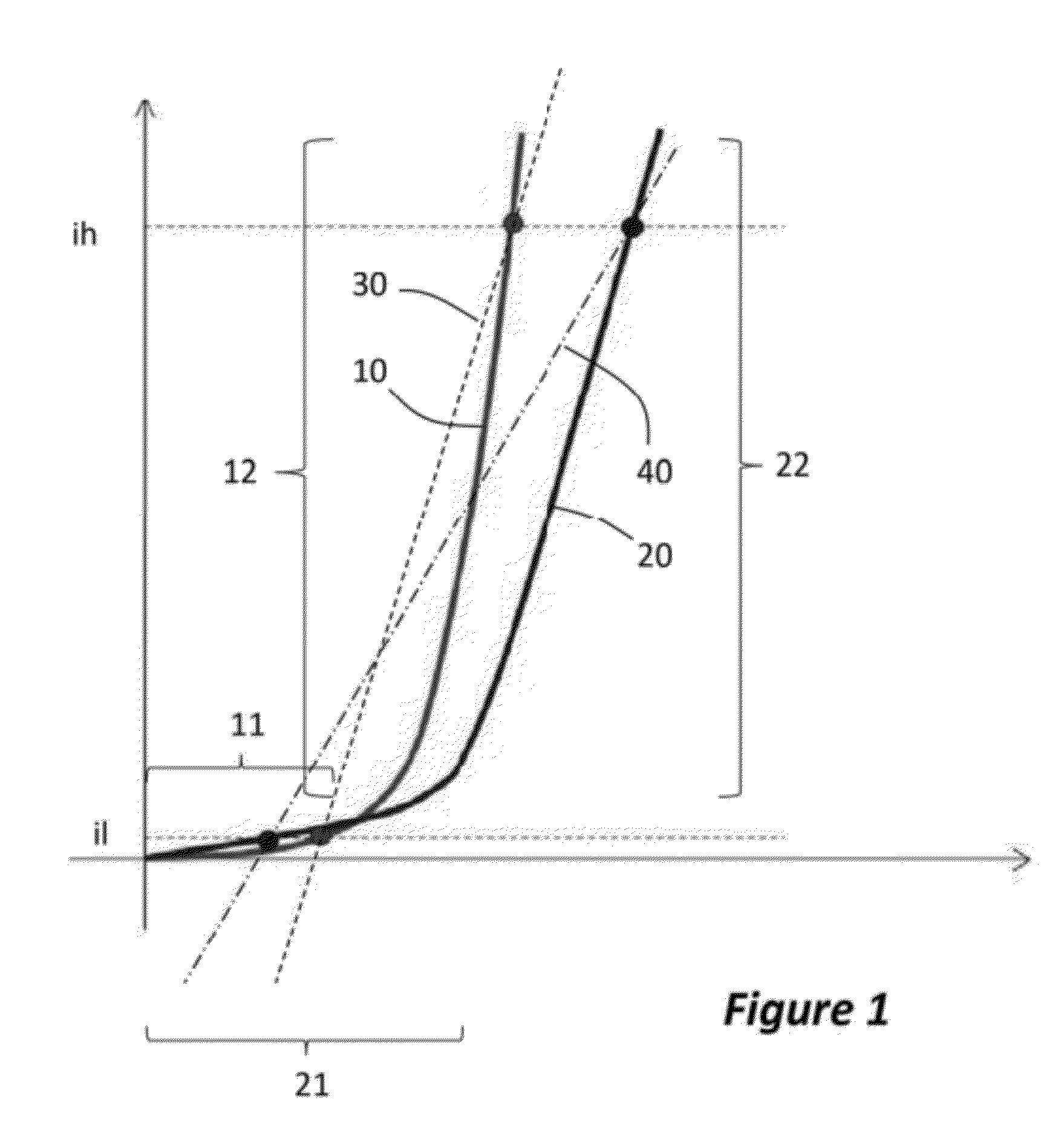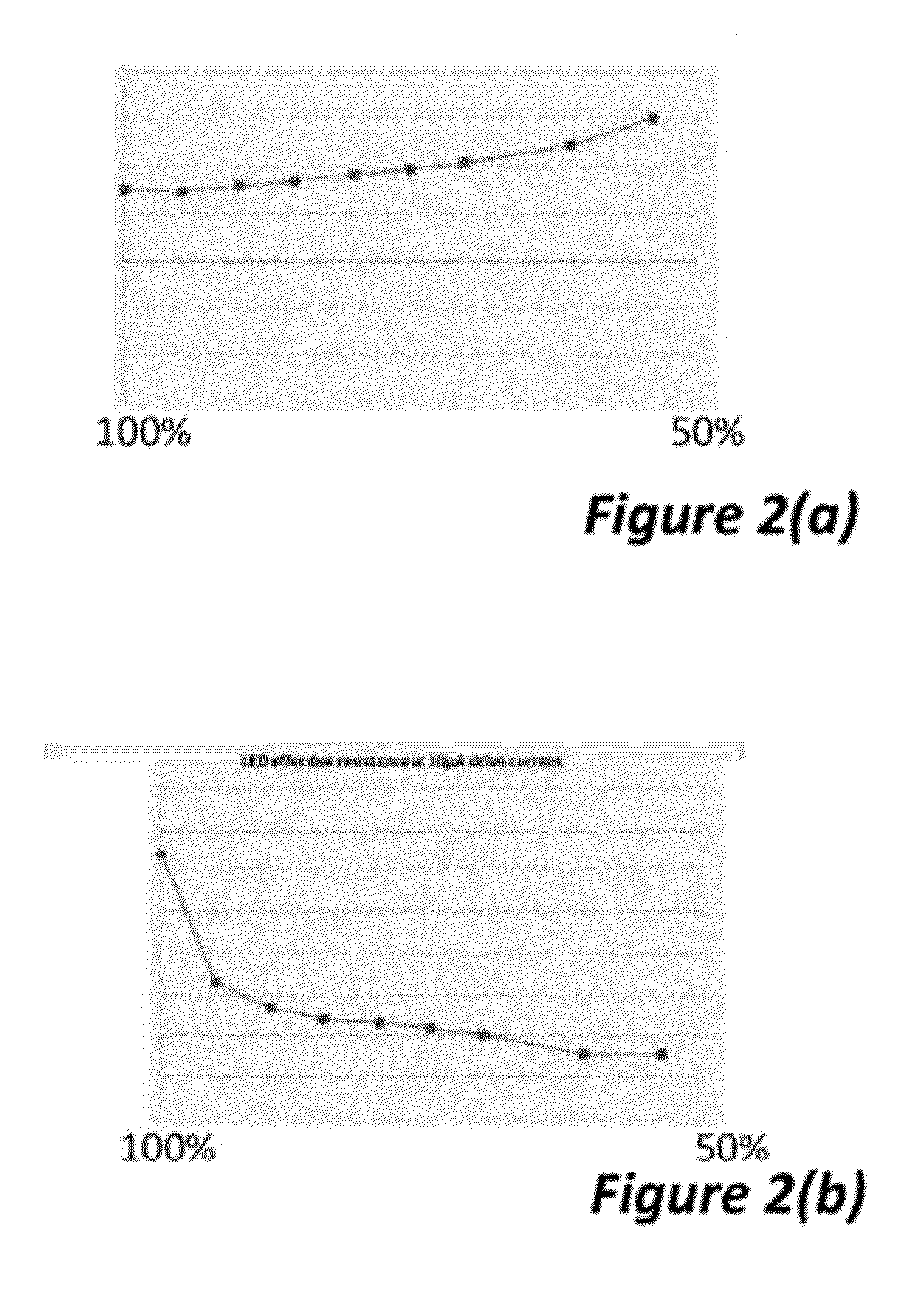Method of characterising an LED device
- Summary
- Abstract
- Description
- Claims
- Application Information
AI Technical Summary
Benefits of technology
Problems solved by technology
Method used
Image
Examples
Embodiment Construction
[0026]FIG. 1 is a graph of typical forward bias current-voltage (IV) plots for an LED. Curve 10 is a typical curve for a “new” or pristine LED, that is to say, an LED which is at the start of its operational lifetime. The curve is characterised by having low leakage current. This is shown towards the left of the curve a region 11, below the ‘knee’ of the curve. Further, above the ‘knee’, the curve is generally steep as shown at region 12.
[0027]The figure further shows a corresponding IV-characteristic 20 of a typical aging LED. Relative to the new, or pristine, LED curve 10, this curve 20 has a somewhat higher leakage at low forward bias, shown at region 21, and typically a somewhat less steep slope at higher forward bias, as shown at 22.
[0028]The curve may be understood as follows: as the LED gets older, the metal—semiconductor contact of the LED may deteriorate, leading to extra resistance at those contacts. This increased contact resistance leads to an increased effective resista...
PUM
 Login to View More
Login to View More Abstract
Description
Claims
Application Information
 Login to View More
Login to View More - R&D
- Intellectual Property
- Life Sciences
- Materials
- Tech Scout
- Unparalleled Data Quality
- Higher Quality Content
- 60% Fewer Hallucinations
Browse by: Latest US Patents, China's latest patents, Technical Efficacy Thesaurus, Application Domain, Technology Topic, Popular Technical Reports.
© 2025 PatSnap. All rights reserved.Legal|Privacy policy|Modern Slavery Act Transparency Statement|Sitemap|About US| Contact US: help@patsnap.com



